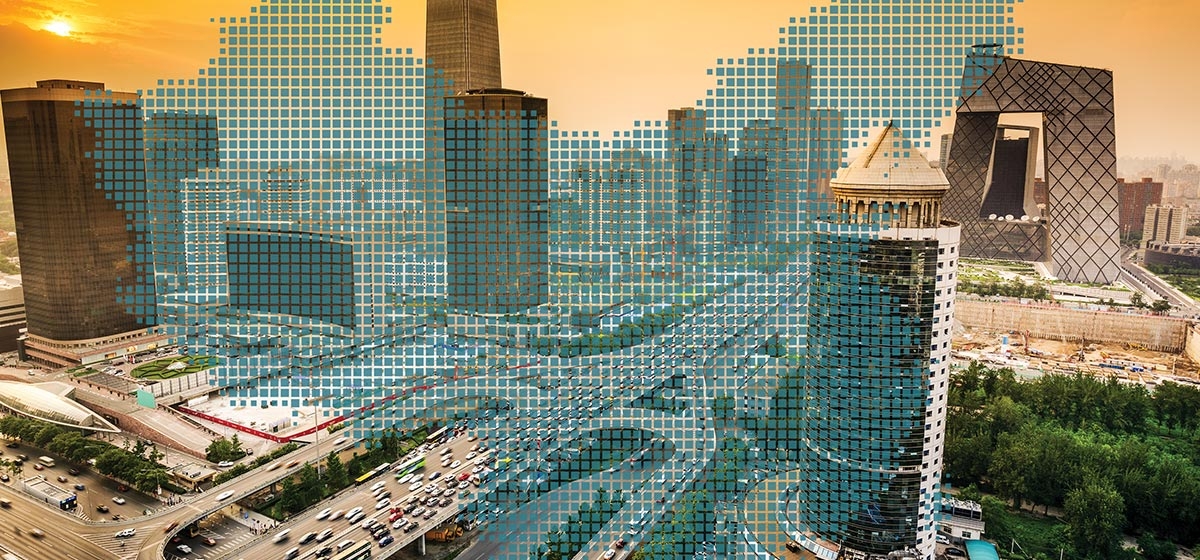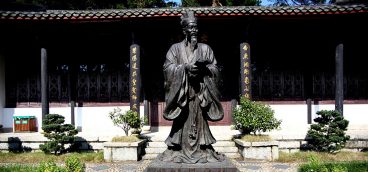China: The New Normal

“All is flux, nothing stays still.” –Heraclitus (540–480 BC). China in 2017 only vaguely resembles the China I described in a 2006 overview for Pittsburgh Quarterly. Few countries have ever changed so much in such a short period. Sit back, because it is time to rethink what you need to know about today’s China.
A decade ago, while a powerful and expanding economy, China was like an awkward teenager unsure of its place in the world. That changed almost overnight when Beijing hosted the 2008 Olympics. At a cost of nearly $50 billion, the Olympics was more than a glitzy global sporting event—it was China’s coming-out party. On the world stage, China trumpeted its arrival as a first-world economic competitor and has not looked back. Seizing upon its premier status as a manufacturing powerhouse, building up its military capabilities, and taking firm charge of its burgeoning economy, China as the world’s second-largest economy hopes to surpass the United States’ No. 1 spot within five years.
Beginning in the 1980s, China’s economy grew at an unprecedented 10–12 percent annual clip. Following the 2008–09 recession, its growth slowed, yet still outpaced every other world economy. This year, China’s economy should grow between 5.5 and 7 percent— the “ne w normal” for China. One factor is Chinese labor costs are much higher than in 2006. Cheap labor has moved on to Cambodia, Laos, and Bangladesh. Higher-val ue consumer goods “Made in China” are no longer s olely destined for export markets. Instead, China’s swiftly growing middle class of more than 350 million is the new target market for air conditioners, automobiles, refrigerators, and vacation packages. So, if you are expecting China’s economy to return to its former 10–12 percent growth per annum, forget it. If you think China is still the go-to source for cheaply created consumer goods, forget it. In the new normal, Chinese manufacturers will be increasingly targeting Western consumers with China’s own brands of highquality goods. U.S. manufacturers and technology companies need to pay attention. Even at lower growth rates and with few Asian competitors (other than perhaps India), China should remain the world’s fastest-growing economy over the next decade.
Xi Jinping & Donald Trump
Roughly every 10 years, China revises its top leadership so one person or a small closely aligned cadre takes the country’s political reins. Because the Chinese Communist Party dominates China’s political system, look within its ranks to identify future leaders. What few Westerners recognize is that Xi Jinping, president of the People’s Republic of China since 2012, has emerged as the single most powerful political figure in China since 1949—more powerful even than Mao Tse Tung. In a breathtakingly short period, Xi has managed to consolidate power in three key sectors: the Chinese Communist Party, the military, and the economy. One could reasonably argue that Xi is the most powerful political leader in the world today (even the president of the United States is counterbalanced by the U.S. Congress and the Judiciary). Watch carefully what Xi does, with whom he meets, and what targets he sets. Xi is a strong leader with ambitions to move China forward with a purpose.
“In the new normal, Chinese manufacturers will be increasingly targeting Western consumers with China’s own brands of high-quality goods.”
To the surprise of many Americans (and much of the world), Donald Trump now resides at 1600 Pennsylvania Avenue as the 45th U.S. president. Much was said by both sides during the heated presidential campaign about the relationship between China and the U.S., including currency manipulation, outsourced manufacturing, and the dumping of China-made goods into the U.S. Will the Trump Presidency upset the current relationship between the two countries? I think not, and the reason is simple economics. The Chinese and U.S. economies are so intertwined that a trade war would be madness, plunging the global economy—including China and the U.S.— into a depression. No one wants that, particularly a newly elected President Trump. While undoubtedly there will be hot words exchanged and occasional flare-ups between Xi and Trump, expect the relationship between the two Superpowers to continue along the same course for the next four years.
The Chinese are coming
Fifty years ago, Norman Jewison directed stars Alan Arkin, Carl Reiner, and Eva Marie Saint in a 1966 parody film called “The Russians are Coming, The Russians are Coming!” To the surprise of many critics, this spoof of a Russian invasion of the U.S. won a Golden Globe and an Academy Award nomination.
Well, it is now 2017, and this time the Chinese really are coming. China now controls more than $3 trillion in foreign currency reserves. For three decades, foreign direct investment flowed from the U.S., Europe, Japan, and Korea into China. Now that trend has reversed. Chinese companies, government entities, and wealthy individuals are using the amassed dollars, yen, euros, and pounds to globally invest in companies, real estate, and technologies, with the U.S. as its largest target. I expect Chinese investors to direct more than $1 trillion into the U.S. over the next eight years. Should these Chinese investors be viewed as a threat to America or our region? Not at all. Instead, it offers some truly unique opportunities.
Chinese foreign direct investment has grown an average of 40 percent per year since 2005, up to $121 billion globally in 2015, according to David Iwinski, president of global business consulting firm Blue Water Growth. In 2014, Chinese companies invested $3.5 billion in the U.S., and in 2015 that figure rose to $7 billion, Iwinski says, adding that $5.9 billion of that is acquisitions with the remainder being greenfield projects and expansions. This capital flow creates significant opportunities for U.S. firms seeking growth capital and those looking for buyers.
If you want to know what kinds of U.S. companies the Chinese are most likely to invest in over the next decade, look back 30 years to what the Japanese did. In the mid-1980s, as the Japanese reached the point where they had developed sophisticated domestic industries, those companies had to grow internationally in order to become true global competitors. Between 1986 and 1992, Japan went through its “Bubble Period,” during which it seemed that Japan was going to take over the world. Self-styled experts such as Professor Ezra Vogel at Harvard declared that “Japan is Number 1!” as Japan embarked on a $1 trillion buying spree. For example, Japanese car makers first invested in U.S. distributors, then later began to design cars with American engineers focusing on American tastes, and eventually built manufacturing plants in the U.S. Other Japanese companies such as Sony became globally active by focusing on electronics and investing in the entertainment industry, acquiring American movie production companies, which became Sony Pictures. The Chinese have already been buying national theater chains and investing in U.S. production companies, making movies with top American actors. Expect that the Chinese will likewise be looking for U.S. manufacturing opportunities, particularly in regions such as Pittsburgh.
Don’t underestimate the attractiveness of technology companies to the Chinese. What China has not done well to date is to develop advanced technologies, which they could export worldwide. They still need to buy and license commercially viable technologies. This is why you will see numerous Chinese companies looking around places like Carnegie Mellon University and MIT for opportunities to invest in emerging technologies that can strengthen their desire to grow internationally.
Battling pollution
After two decades of rapid and expansive infrastructure growth, it’s unlikely that the pace of that sector of the Chinese economy will return to past levels for at least the next five years. This is likely to have a direct and negative impact on the metals industry both in China and the U.S. Ironically, this stagnation provides a perfect excuse for the Chinese government to accelerate the closing of outdated factories operating in the metals industry. Closing these inefficient factories will increase productivity in the long run and reduce the labor force, which is needed in other industries.
A related development is pollution. Polluting industries in China are causing significant long-term problems affecting the environment and the health of an increasingly vocal Chinese population. Government officials can no longer ignore the polluted air and unsafe water in Chinese cities, and the government is clearly serious about cutting back on polluting industries within its borders. Beyond closing and modifying outdated plants in steel, metals, chemical and other polluting industries, the government will demand pollution control technologies of all kinds. This will be a major area of opportunity for Pittsburgh companies that can supply products and services for environmental remediation.
A Pittsburgh success story
One example of Chinese investment in the U.S. involves Shenda Electric, a manufacturer of large power transformers. Unable to gain a U.S. foothold, Shenda decided to purchase a Scottdale, Westmoreland County, company called R.E. Uptegraff Manufacturing Company. Founded in 1926, Uptegraff was known for its excellent quality and specialty designs, but it was hit hard during the 2008–10 recession and its third-generation family owners were struggling to keep the business afloat.
Since purchasing Uptegraff in 2014, Shenda has invested in the renovation of the existing buildings (two of which date back to 1900 and 1908) and the remediation of all legacy environmental issues. Shenda provided new production equipment and performed long-overdue maintenance on mission-critical machines and systems. Productivity, on-time deliveries, and lead times have all improved. In 2017, Shenda will renovate and transform the historic landmark “1900” building into its North American corporate offices. It will break ground on a new multimillion-dollar factory addition that will double Uptegraff’s capacity and size range and increase employment in Scottdale. In other words, according to Uptegraff CEO Chuck Mosca, “without Shenda’s investment in the physical infrastructure and commitment to the U.S. market and local job creation, there would be no Uptegraff today.”
China is now a world power and economic competitor, and it is up to us how we respond. While western Pennsylvania is reinventing itself with urban housing developments, bike lanes, farm-to-table dining, motion picture industry, medical advances, cultural attractions, and a thriving hospitality industry, it must do more. One way is to understand, seek, and welcome dialogues with Chinese companies—and to embrace the diversity it will bring to our region. Maintaining an open mind about the benefits from Chinese foreign direct investment will present new opportunities for growth that were unheard of 10 years ago. The “new normal” for the U.S. is that the Chinese are not only coming—they are here.





